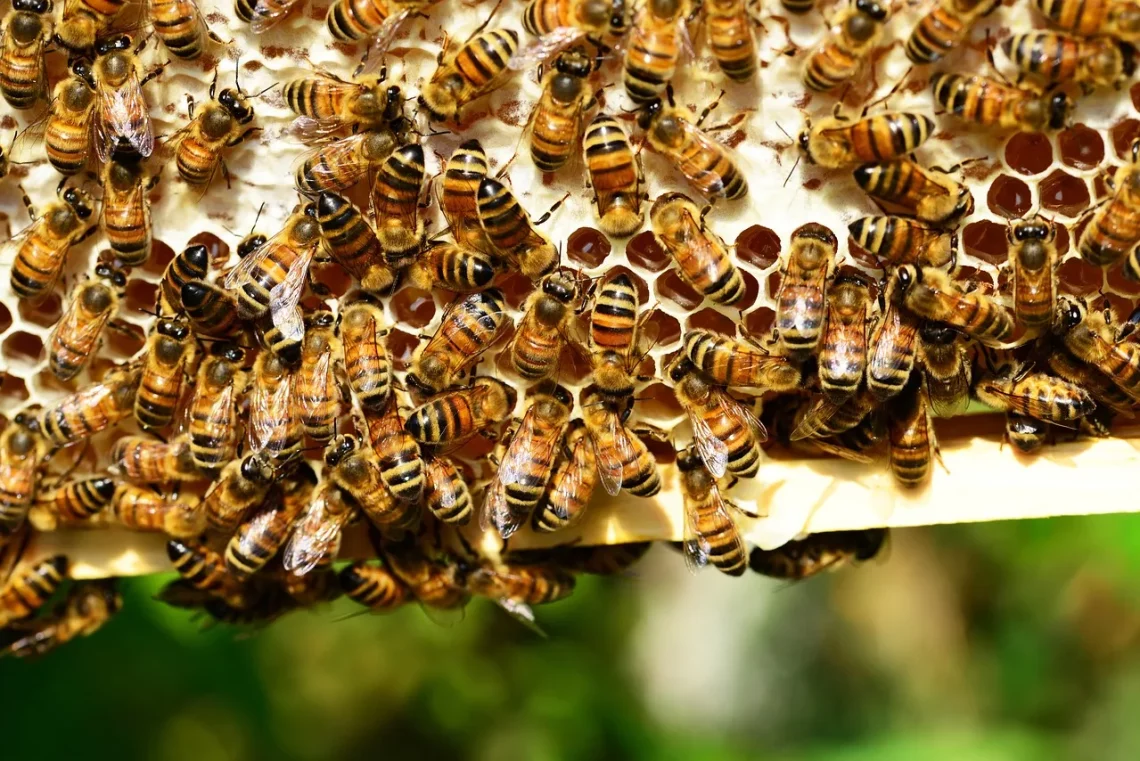
Do Bees Really Have the Ability to Smell Fear in Humans?
Bees are fascinating creatures that play a crucial role in our ecosystem. They are often associated with honey production, pollination, and biodiversity. However, the intricate behaviors and capabilities of bees extend far beyond these well-known functions. Among the many myths and misconceptions surrounding these insects, one of the most intriguing is the idea that bees can smell fear in humans. This notion raises questions about the sensory capabilities of bees and how they interact with their environment, including humans.
The relationship between bees and humans is complex; while bees are generally not aggressive and will only sting when they feel threatened, the perception of fear can alter their behavior. This has led to a widespread belief that bees can detect human emotions through scent. Exploring this topic requires a closer examination of bee physiology, their sensory systems, and the potential for emotional recognition. Understanding the reality behind this popular belief can illuminate not only the behavior of these remarkable insects but also our own interactions with them.
Understanding Bee Senses
Bees possess a sophisticated sensory system that allows them to interact with their environment in remarkable ways. Their primary senses include sight, smell, and taste, which play crucial roles in their survival and social behavior. Of these, their sense of smell is particularly developed. Bees have a pair of large antennae that house thousands of olfactory receptors, enabling them to detect a wide array of scents in their surroundings.
While humans rely heavily on vision, bees use their sense of smell to navigate and communicate. For example, they can detect floral scents from great distances, which helps them locate food sources. The ability to discern different chemical signals is vital for their foraging behavior and colony organization. Bees can also recognize pheromones, which are chemical signals used for communication within the hive. These pheromones can indicate various states, such as alarm, mating readiness, or even the presence of a queen.
However, the question remains: can bees detect fear in humans? The concept of “smelling fear” can be confusing, as it suggests that bees can interpret human emotions through scent alone. While bees can certainly detect changes in the environment, including pheromones released by other creatures in distress, the direct correlation between human emotions and bee behavior is still a topic of exploration.
The Science Behind Fear and Scent
To comprehend whether bees can smell fear, it’s essential to examine the science of fear itself. When humans experience fear, the body undergoes various physiological changes. These changes often include the release of stress hormones, such as adrenaline and cortisol. Additionally, fear can lead to the release of certain chemicals into sweat, which may alter a person’s scent profile.
Some studies suggest that certain animals can sense the chemical signals associated with fear. For example, dogs are known to exhibit changes in behavior when they detect fear in their owners. This has led to speculation that other animals, including bees, might possess similar abilities. However, the specific ability of bees to smell fear in humans is not well-documented in scientific literature.
The notion that bees might detect fear is likely rooted in their sensitivity to pheromones and their heightened awareness of environmental changes. When a person is frightened, they may inadvertently release pheromones associated with stress, which could potentially alert the bees to a change in the atmosphere. This response could lead to increased agitation among the bees, making them more likely to sting if they perceive a threat.
Nonetheless, it is crucial to differentiate between the ability to detect fear and the instinctual responses bees have to perceived threats. Bees are naturally defensive creatures, and they will react to any sign of danger, whether it comes from a human’s body language, movement, or chemical signals. Therefore, while bees may not specifically “smell fear,” they can react to the cues that indicate a potential threat.
Bee Behavior in Human Interaction
Understanding how bees behave in the presence of humans can shed light on the dynamics between these insects and our emotions. Bees are generally non-aggressive and will only sting when they feel threatened. When a person approaches a bee or a beehive with sudden movements or displays signs of panic, the bees may interpret this as a threat, leading to defensive behavior.
The environment plays a significant role in bee behavior as well. For instance, if a person is calm and composed, they are less likely to provoke the bees. Conversely, erratic movements or loud noises can trigger alarm signals among the bees, leading them to become more defensive. This suggests that while bees may not directly sense fear, they do respond to the emotional states of humans through body language and environmental cues.
Additionally, studies have shown that bees exhibit varying degrees of aggression depending on their species and the context of the interaction. Some species are more likely to defend their territory than others. Honeybees, for instance, are generally more docile compared to wasps. Understanding the specific behavior of the bee species in question can provide insights into how to safely interact with them.
For those who work with bees, such as beekeepers, it is essential to approach them with a calm demeanor and gentle movements. This not only minimizes the risk of stings but also fosters a more harmonious relationship between humans and bees. By recognizing the signals that bees respond to, individuals can navigate interactions with these remarkable insects more safely and effectively.
Myths and Misconceptions About Bees
The belief that bees can smell fear in humans is one of many myths that surround these fascinating creatures. Misunderstandings about bee behavior are often perpetuated through anecdotes and folklore, leading to a skewed perception of their capabilities. Some of these myths can contribute to unnecessary fear or anxiety about bee encounters.
Another common misconception is that bees aggressively seek out humans to sting them. In reality, bees are more interested in foraging for food and maintaining their colony. They typically sting only when they feel threatened or provoked. Understanding the natural behavior of bees can help mitigate fear and promote coexistence.
Furthermore, many people are unaware of the crucial role bees play in pollination and ecosystem health. The decline of bee populations due to habitat loss, pesticides, and climate change is a significant concern that demands attention. By fostering a better understanding of bees and their behavior, we can shift the narrative from fear to appreciation.
Education about bee behavior and ecology can help dispel myths and encourage more positive interactions with these essential pollinators. Initiatives that promote bee conservation and awareness can pave the way for healthier ecosystems and a greater respect for the natural world.
In conclusion, while bees may not possess the ability to smell fear in humans in the way that is commonly believed, they do respond to various cues in their environment. By understanding bee behavior and fostering respectful interactions, we can coexist with these vital insects while appreciating their remarkable contributions to our ecosystem.
**Disclaimer:** This article is for informational purposes only and should not be considered medical advice. For any health concerns or issues, please consult a qualified healthcare professional.




